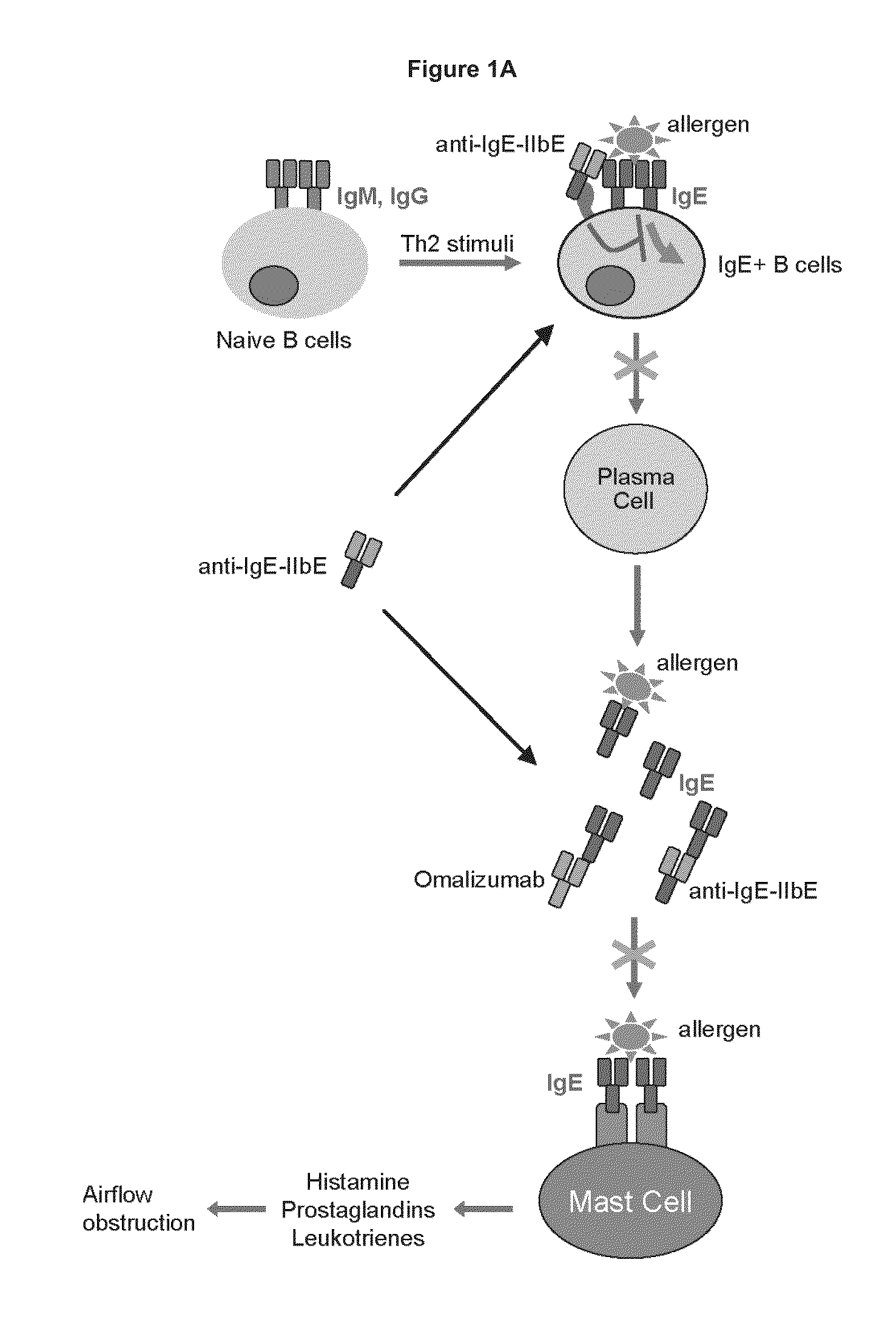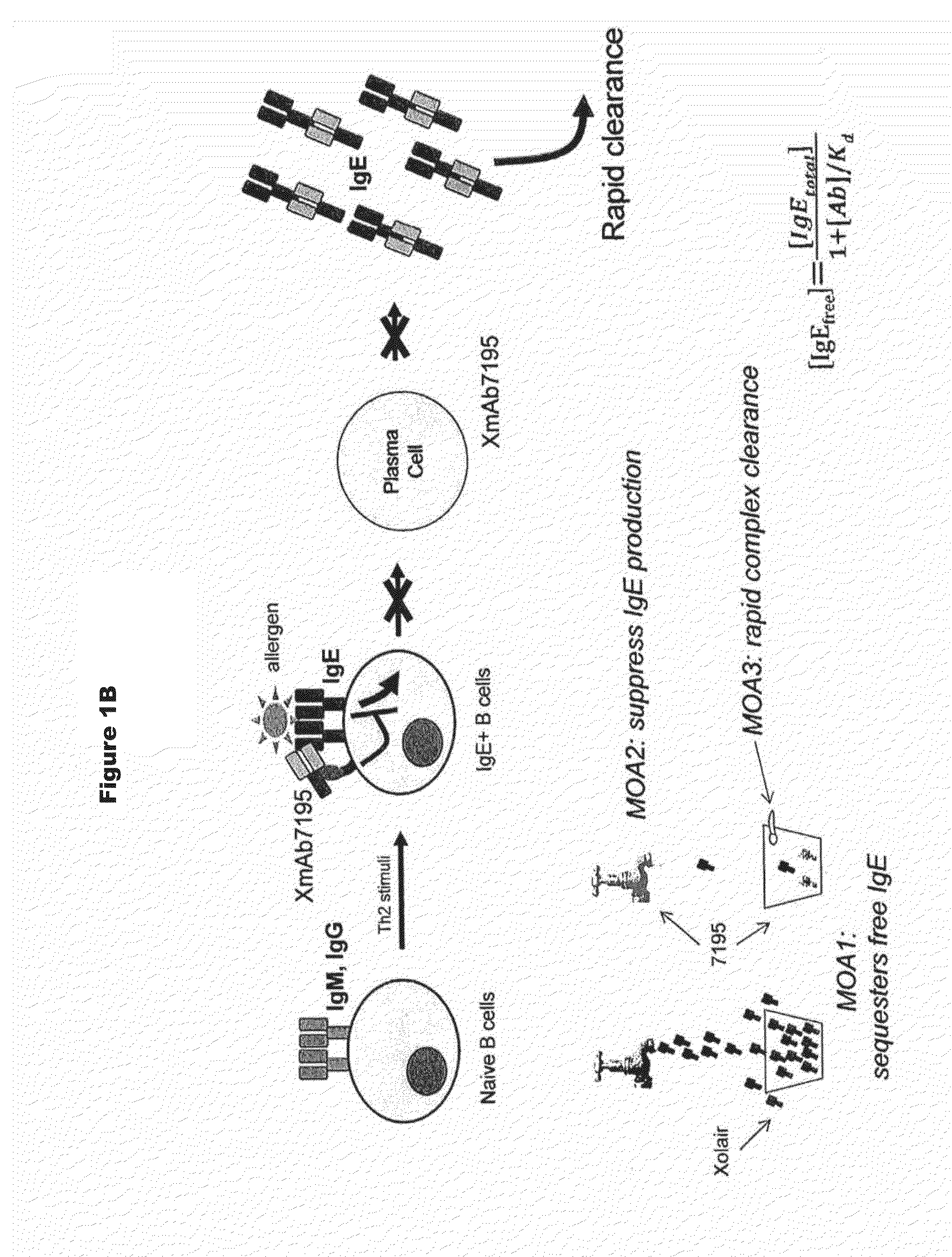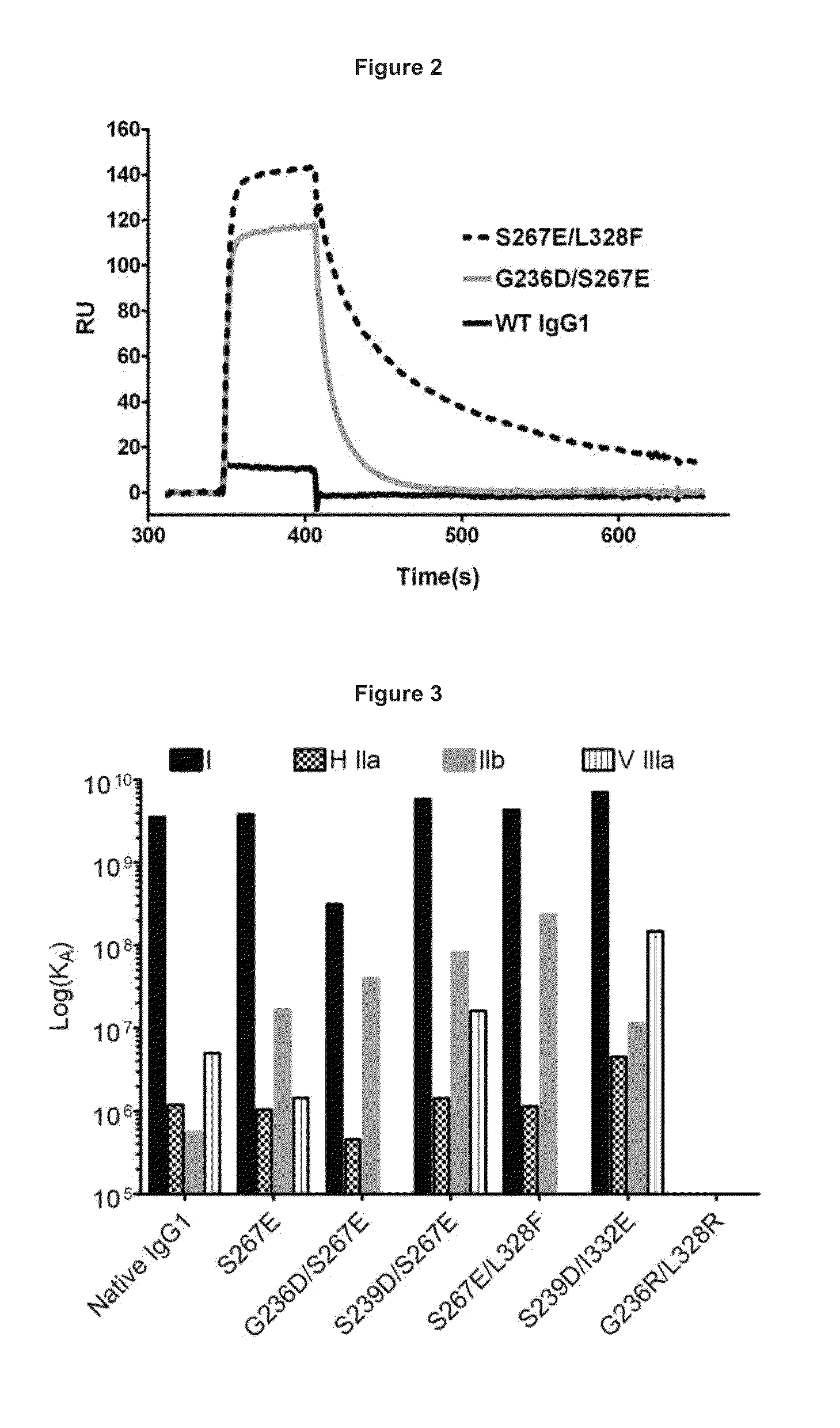Rapid clearance of antigen complexes using novel antibodies
a technology of antigen complexes and novel antibodies, which is applied in the direction of antibody medical ingredients, peptide/protein ingredients, peptide sources, etc., can solve the problems of serious complications, affecting the quality of life, and significantly impaired clearance of radiolabeled small immune complexes (sic) in fcriib knockout strains compared to wild-type mice, so as to achieve rapid reduction of serum concentration of an antigen and increase affinity
- Summary
- Abstract
- Description
- Claims
- Application Information
AI Technical Summary
Benefits of technology
Problems solved by technology
Method used
Image
Examples
example 1
Novel Methods for Inhibiting IgE+ FcγRIIb+ Cells
[0330]Immunoglobulin IgE is a central initiator and propagator of allergic response in affected tissue. IgE binds the high affinity receptor for IgE (FcεRI), a key receptor involved in immediate allergic manifestations that is expressed on a variety of effector cells, including mast cells, basophils, eosinophils, as well as other cell types. Cross-linking of FcεRI by immune-complexed IgE-allergen activates these cells, releasing chemical mediators such as histamine, prostaglandins, and leukotrienes, which may lead to the development of a type I hypersensitivity reaction. The approved monoclonal antibody Omalizumab (Xolair) neutralizes IgE by binding to it and blocking engagement with FcεR's. Omalizumab reduces bioactive IgE through sequestration, attenuating the amount of antigen-specific IgE that can bind to and sensitize tissue mast cells and basophils. This neutralization of free circulating IgE, in turn, leads to a decrease in symp...
example 2
Anti-IgE Antibodies with High Affinity for FcγRIIb
[0335]Under physiological conditions, bridging of the BCR with FcγRIIb and subsequent B cell suppression occurs via immune complexes of IgGs and cognate antigen. The design strategy was to reproduce this effect using a single crosslinking antibody. Human IgG binds human FcγRIIb with weak affinity (greater than 100 nM for IgG1), and FcγRIIb-mediated inhibition occurs in response to immune-complexed but not monomeric IgG. It was reasoned that high affinity to this receptor (less than 100 nM) would be required for maximal inhibition of B cell activation. In order to enhance the inhibitory activity of the anti-IgE antibodies of the invention, the Fc region was engineered with variants that improve binding to FcγRIIb. Engineered Fc variants have been described that bind to FcγRIIb with improved affinity relative to native IgG1 (U.S. Ser. No. 12 / 156,183, filed May 30, 2008, entitled “Methods and Compositions for Inhibiting CD32b Expressing...
example 3
In Vitro Inhibition of IgE+ B Cells by Anti-IgE Antibodies with High Affinity to FcγRIIb
[0347]An enzyme-linked immunosorbent assay (ELISA) was established to detect IgE. Flat bottom plates were prepared by coating with pH 9.4 Na Bicarbonate buffer, followed by adherence with anti-IgE capture antibodies at 10 ug / ml overnight in pH 9.4 (0.1 M NaBicarbonate buffer). After overnight, the plate was blocked with 3% BSA / PBS, and serial dilutions of IgE (from a human IgE ELISA kit, Bethyl Laboratories) was added 3× to 1 ug / ml. After 3 hours, plates were washed 3× (200 μl) with TTBS, and bound IgE was measured. HRP-conjugated goat polyclonal anti-human IgE antibody (Bethyl Laboratories) was added at (1:5000) for 1 hour in 1% BSA / PBS. Samples were washed 3× and IgE was detected with TMB peroxidase substrate (KPL, Inc 50-76-00). Reactions were stopped with 50 μl 2N H2SO4 and read at 450 nm.
[0348]FIG. 10 shows capture of IgE with various anti-human IgE antibodies, including a pool of three mono...
PUM
 Login to View More
Login to View More Abstract
Description
Claims
Application Information
 Login to View More
Login to View More - R&D
- Intellectual Property
- Life Sciences
- Materials
- Tech Scout
- Unparalleled Data Quality
- Higher Quality Content
- 60% Fewer Hallucinations
Browse by: Latest US Patents, China's latest patents, Technical Efficacy Thesaurus, Application Domain, Technology Topic, Popular Technical Reports.
© 2025 PatSnap. All rights reserved.Legal|Privacy policy|Modern Slavery Act Transparency Statement|Sitemap|About US| Contact US: help@patsnap.com



